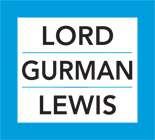Resume Writing: The Art of Standing Out & Being Seen
Trista Neubauer, hellopossible!
For most of us, resume writing is like watching paint dry or water boil. It’s torture. We question everything—the correct format, the right level of detail, which experiences to highlight, the appropriate use of keywords, whether or not to include dates. No matter what we do, we feel like we can’t create a compelling enough picture of our true value. Add in the fact that recruiters will spend less than 60 seconds reading your resume and that ATS will score your resume before it even reaches a human, and the process simply becomes overwhelming.
When coaching the art of resume writing with clients, this little line from the song “Whatever it Takes” by the Imagine Dragons usually comes to mind when thinking about their hopes and frustrations: “I’m an apostrophe, I’m just a symbol to remind you that there’s more to see ... Take me to the top, I’m ready for whatever it takes.”
For me, this image of the apostrophe and its purpose in contractions—to hide letters—summarizes the challenge clients have during the writing process. They often become frustrated that they can’t convey who they believe they are on paper. They are discouraged when recruiters and hiring managers don’t see their worth. Like the apostrophe with the missing letters, they feel hidden. They want what is special about them to be seen—there is more to them than what meets the eye. Writing takes time, patience and requires us to be kind to ourselves. Below are four tips to help you stand out and rise to the top!
Target a Position:
Exploration is part of life. Most of us have had varied experiences, positions, and careers. But when it comes to your resume you need to write to a specific role. This starts at the very top with a targeted position description like Director of HR or Senior Sales Leader. Immediately the reader will understand what you are offering them. If someone has to guess, you have already lost them. I recommend to clients to write a different resume for every diverse role being explored. Though you may be equally interested in Event Planning and Training & Development, these roles will require you to highlight different achievements. Also, always use the position’s job posting as a guide to which skills to include and what types of results to emphasize since your resume will be scored against these requirements when applying online. Broad resumes will get lower scores and succeed less in painting a picture of your unique value.
Shout it From the Rooftops—Make Your Achievements Easy to Find:
Executive summaries at the top of a resume are key. Picture a newspaper on the street corner —you are enticed to buy the paper based on what is “above the fold” not buried deep within. I tell clients to do just this. Fold your resume in half—the top part should shout out your targeted title/position, your two-three career highlights, your significant results, and your key competencies. Test yourself. If this is all you read, do you walk away with a solid sense of who you are? This approach trumps the older style of writing where resumes immediately jump into a long list of positions and bullets, making readers hunt for key data and themes like a needle in a haystack.
Context is Key:
Bullet points in a resume often read like job descriptions—an inventory of what you have done versus a story of the impact you have had. When this occurs, resumes become laundry lists. They all look the same making candidates morph into one for recruiters. Instead, provide context! Explain the pain points that you addressed. Were you brought in to tackle organizational change, a restructuring, an expansion, process improvements? I often coach clients to use the C-A-R model to differentiate themselves. Highlight for your key projects the Challenges you faced, the Actions you took, and the Results you achieved for your resume to sound unique.
Write to Those in a Rush:
Let’s face it, nobody wants to read a resume. Our goal then is to engage the reader, to get them to skim your document fully, to even get them to turn the page. Modern resumes should always leverage shading, color, borders, graphics, and subheadings to allow one’s eye to continue down the page and through the document. It’s ok to build in testimonials or meaningful mantras to add a personal flare.
Resume writing is about being authentic, getting specific, and describing your unique value. I hope these tips help you uncover and convey your own story for all to see!
Trista Neubauer is the founder of hellopossible!—a coaching company focused on helping individuals build compelling career materials for their job search. Job seekers and career changers need to be authentic, get specific, and define their unique brand promise when crafting resumes, LinkedIn profiles, executive bios, and cover letters as well as in preparing for interviews. Trista is a Professionally Certified Resume Writer (ACRW) who brings her 15+ years consulting expertise on Talent issues with Fortune 500 companies to the career coaching space. Together, you will uncover, explore, and Highlight Your Career Story to reach your own Possible!
https://www.sayhellopossible.com
914-525-9718
